
21 Festive Winter Wedding Ideas For Your Special Celebration
Whilst spring & summer weddings are extremely popular, especially in the UK, there is something so cosy, romantic, and stunning about a winter wedding celebration.

Plan, enquiry & save on the go.


Plan, enquiry & save on the go.

Are you a supplier? Click here
Please sign into your account
Fields marked with an asterisk (*) are required.
Fields marked with an asterisk (*) are required.
You can share your Events with anyone you would like to be a part of your planning process. They must have an existing account to view the Event, and will need to archive any active Events on their account, in order to successfully share this Wedding.
By doing this, you will be deleting the event details. You will not be able to retrieve this. Are you sure you would like to continue?
Are you sure you would like to continue?
By doing this, you will be deleting this event details. You will not be able to retrieve this event data. Are you sure?
Are you sure you want to delete all the details for this guest - you will not be able to change the later.
If you would like to cancel your Membership, click below to ensure payments are no longer billed to your account. Your profile will remain active until the end of your current billing period.
Don’t leave, we will miss you!
If you would like to cancel your Membership, click below to ensure payments are no longer billed to your account. Your profile will remain active until the end of your current billing period.
Your Membership will override any existing features, if you choose to switch your plan.
This membership plan provides you with the following features:

By doing this, you will be deleting your Profile, Billing and Membership details. You will not be able to retrieve any account data. Are you sure?

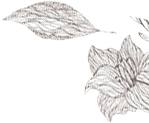
5th July 2023
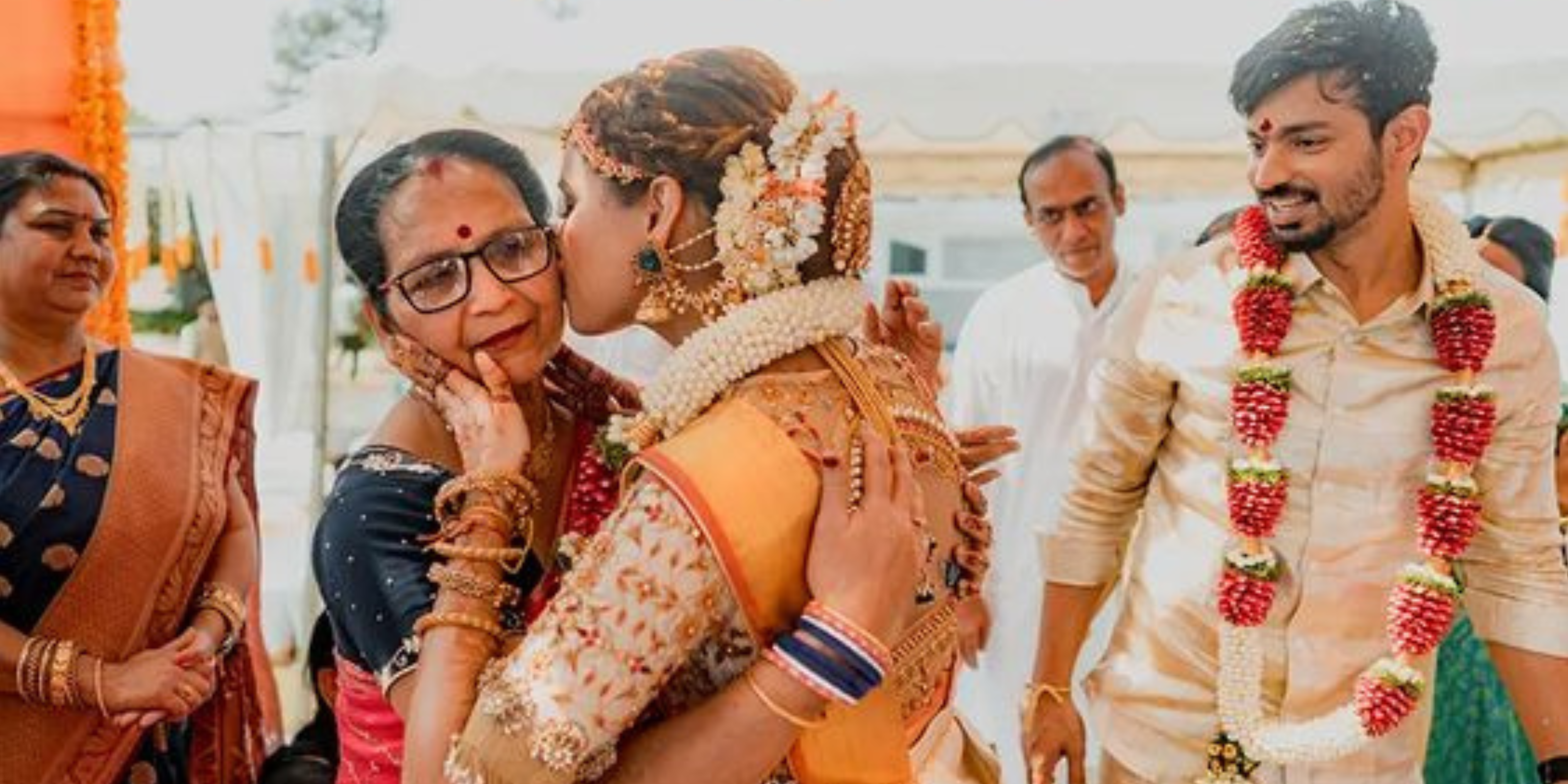
South Asian weddings are so fun. The music, the celebration, the colours, the love: it’s all incredible. Every single element of a wedding ritual & custom relates to a deep-rooted South Asian tradition, each of which were carried out by each of our ancestors many, many years ago. That being said, given that there are around 29 distinct cultures within the region, it’s safe to say that no two weddings are really ever the same. Each family has various nuances to the events, which makes every event at every wedding very unique.
In this blogpost, we’ve decided to explore all the Tamil wedding ceremony customs & traditions that every could should know.
COMMUNICATION IS KEY
Whilst we hope this post is extremely useful in giving you a bit of a starting point to understanding the traditions, it's always best to speak to your partner & families to see how you want to interpret and implement them into your wedding.
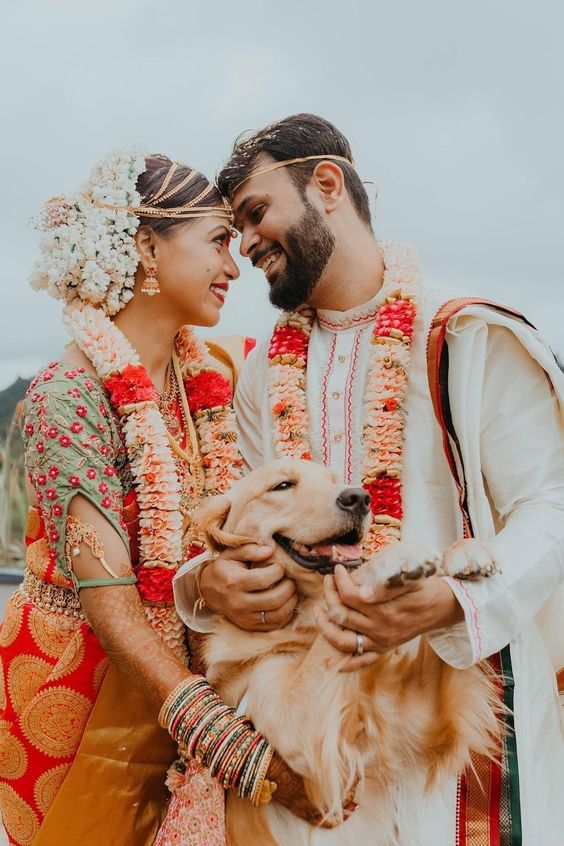
The Nischayathartham ceremony symbolises the first step towards marriage.
The families of the bride and groom come together, exchanging gifts, and finalising the wedding date. The couple also exchanges rings, symbolising their commitment to one another.
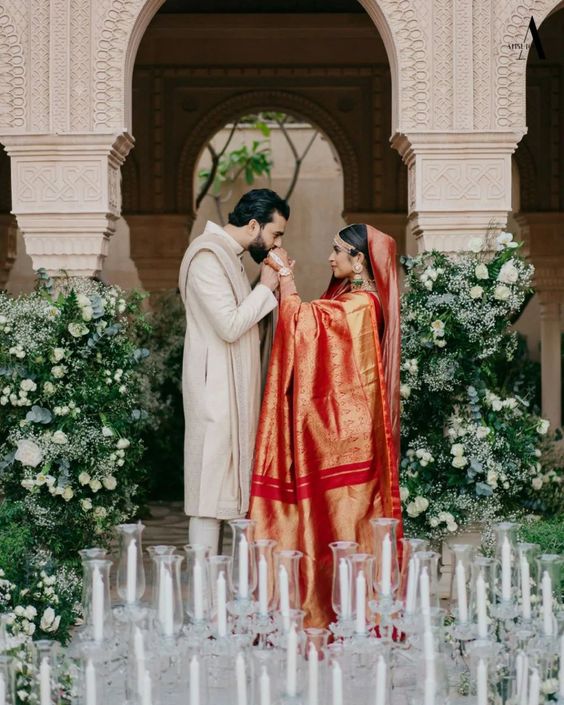
The “Panda Kaal Muhurtam” is a cherished Tamil wedding tradition which lets friends & family know that the wedding is soon about to take place.
To perform this ritual, the wedding parties bring home a bamboo pole, which is washed in a specific mixture of milk, water, turmeric paste, sandalwood paste and vermillion. This is then placed in any one of the corners outside of the house, and decorated with various items such as leaves of a banana plant, colourful flowers & more.
Many consider this to be the blessings for the start of a happy and successful marriage.
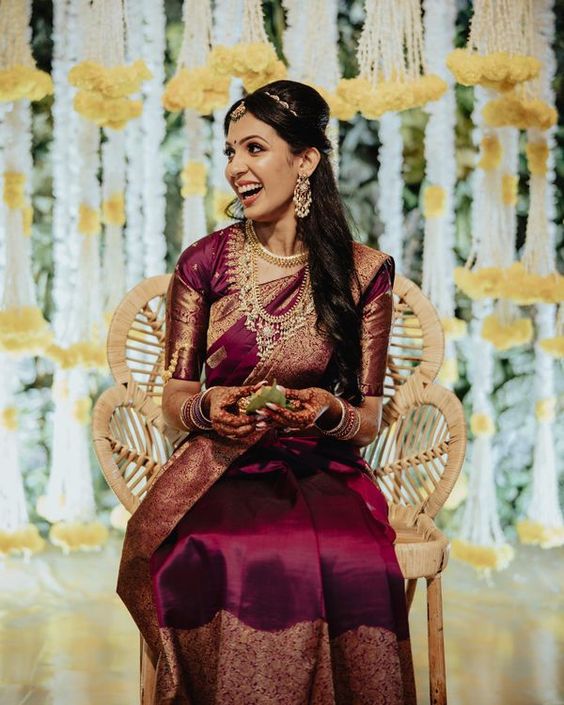
During the Sumangali Prarthanai, the bride-to-be seeks the blessings of married women in her family and community. The ceremony is usually conducted at the bride’s home or wedding venue a day before the wedding. It is auspicious to have an ‘odd’ number of women partake in this ceremony ie. 3, 5, 7, or 9 close married women.
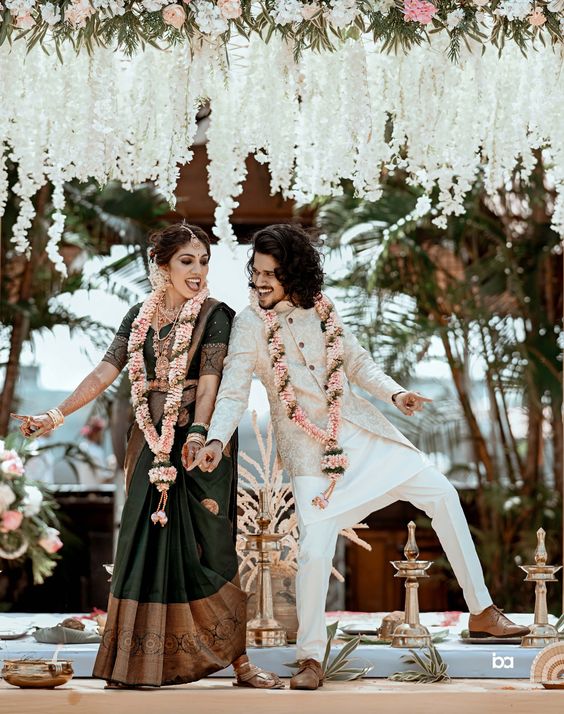
The “Pallikal Thellichal” is a unique & symbolic ritual that involves the breaking of clay pots filled with rice, kumkum, and flowers. The ritual holds significance and is believed to bring good luck, remove obstacles, and ensure prosperity in the married life of the couple.
The seven pots are also decorated by the married women, and traditionally broken by the mama (mum’s brother), followed by ample amounts of celebration.
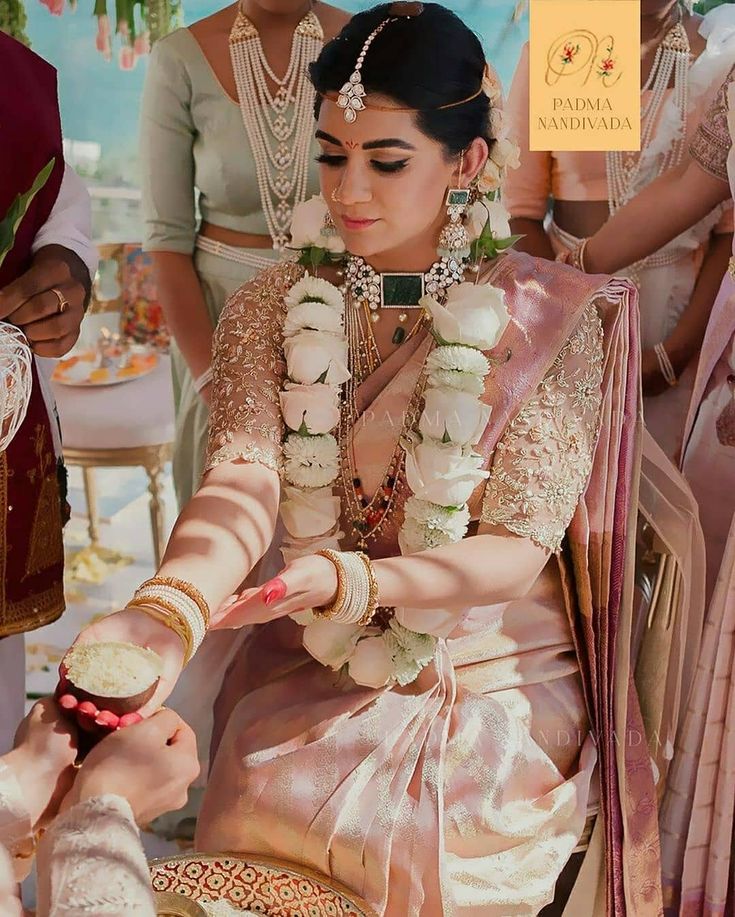
Often carried out the day before the wedding, the Naandi Shraddham is when one side of the family welcomes to other family, and welcomes them with trays of dried fruits, sweets, betel leaves, betel nuts, fruits and more. They are showered with rosewater and presented with garlands and a vermillion tikka.
After the warm welcome, the families traditionally invite ten Brahmins and treat them to a traditional vegetarian lunch. Some families choose to present them with traditional two piece garments (veshtiangavastram) along with betel leaves, betel nuts, coconut, fruits and sweets. The Brahmins bless the couple and wish them a prosperous life ahead.
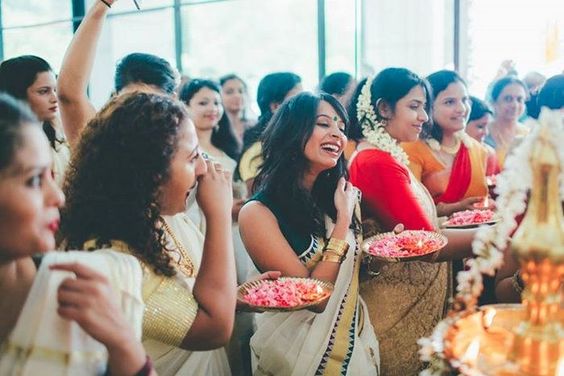
The Vrutham ceremony is a symbolic ceremony which is traditionally performed the morning of the wedding at the Groom’s house, and is nowadays open to interpretation. A piece of yellow thread with turmeric is tied around the individuals wrist, which symbolises the change in an individuals phase of life e.g. going from a boy to entering manhood a as a married man.
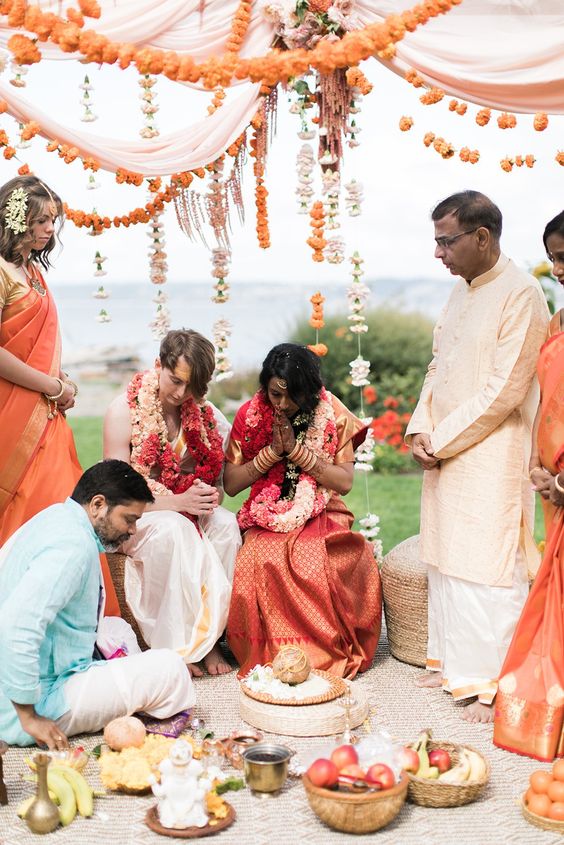
The Mangala Snanam is closely associated to a haldi ceremony, often at the crack of dawn at each partner’s respective home. The couple are smeared with a paste of turmeric, sandalwood and kumkum by their family and friends, after which they are bathed in holy water to cleanse and purify their body and soul. They then proceed to get ready for the ceremony.
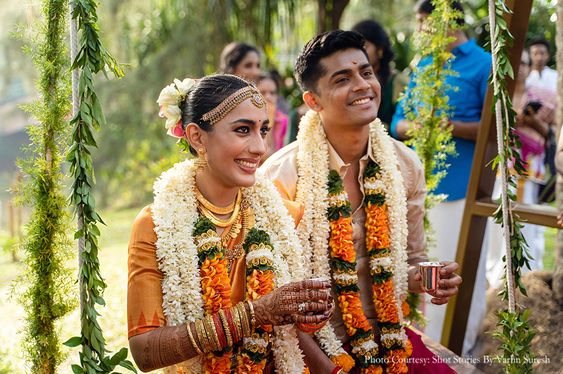
This is one of the first parts of the traditional Tamil wedding ceremony. An idol of the Goddess Gauri, who represents purity, austerity and virtue, is placed on a plate containing rice and kumkum. After the bride has been dressed up, she offers her prayers and performs a short puja to the Gauri idol wishing for a happily married life ahead.
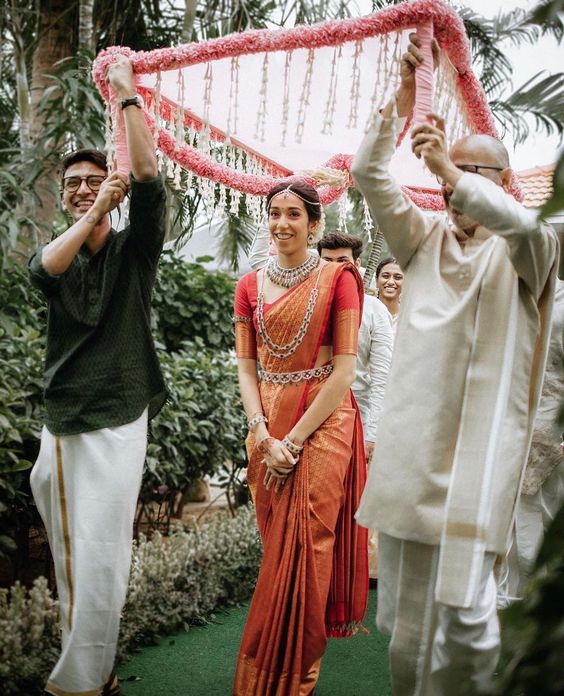
The “Aalathi” ceremony, also known as “Aarti,” is a significant ritual that is performed in Tamil weddings and other Hindu ceremonies, by two married women. It is a traditional act where the women circle a tray of light in front of the bride or groom to ward off any obstacles. The Aalathi is performed at the start and end of the wedding ceremony.
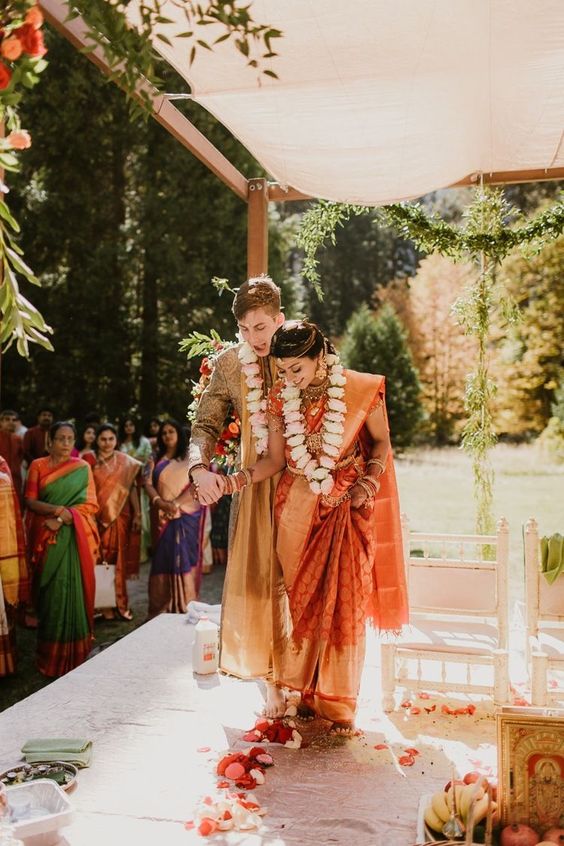
After the groom arrives at the wedding mandap, the parents of the the partner wash his feet with holy water, sandalwood, milk, and kumkum. His feet are then wiped dry with flower petals.
As the partner arrives at the mandap, this ceremony indicates the exchange of garlands with the partner 3 times, amidst tons of laughter and playful antics.
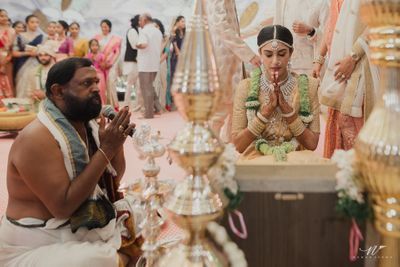
The Kanyadaanam is a traditional ceremony where the bride’s parents formally offer their daughter as a gift to the groom, symbolising the transfer of responsibility and guardianship from the bride’s family to the groom’s family. “Kanya” means daughter, and “danam” refers to the act of giving. The tradition has since then been interpreted to include more equality within the partnership.
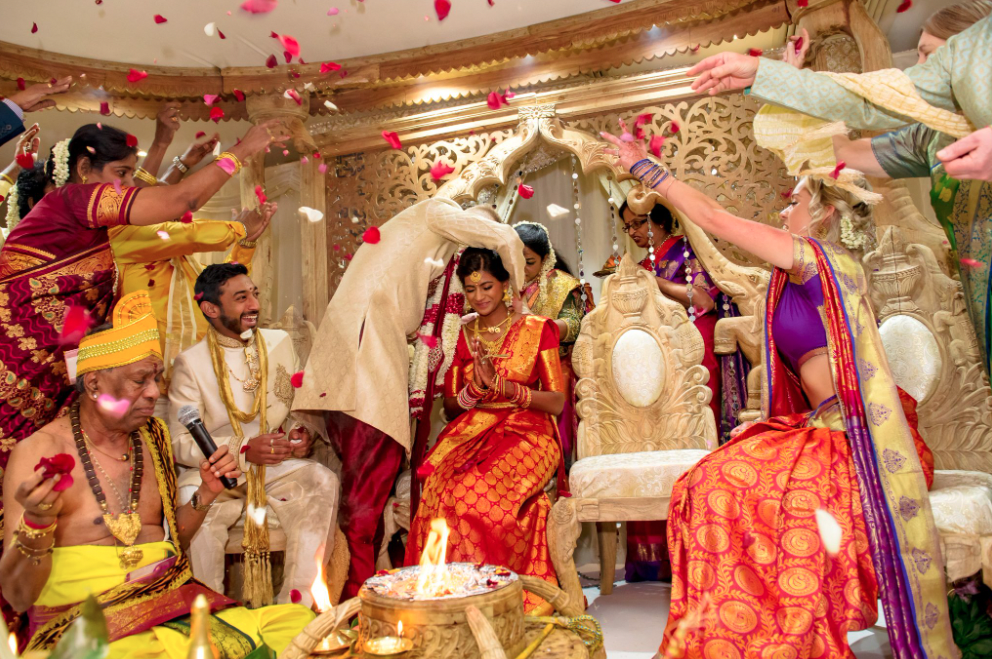
After the official Kanyadaanam, the Muhurtham is the process of the groom’s family offering the ‘Koorai’ saree to the bride. This is offered as a gift from the groom’s family, as a form of acceptance and welcoming their new family member. This is traditionally a red saree, which the bride then departs to change into. At this point, she makes a second walk down the aisle in her newly gifted outfit, which has been blessed by friends, family & wedding guests.
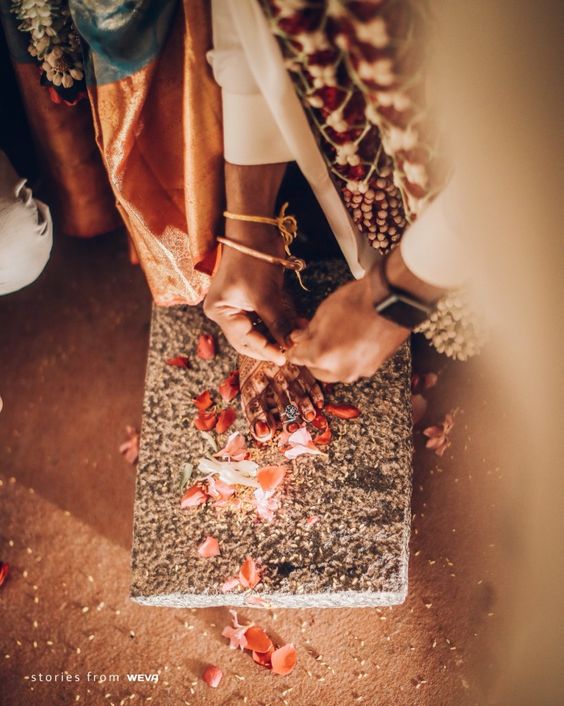
The bride and the groom hold hands and take seven steps around the holy fire while the priest chants Vedic mantras in Saptapadi, which is one of the most important rituals in the marriage and represents the vows. The groom then holds the bride’s left toe as she steps over a grindstone, symboliing the solidity of their union.
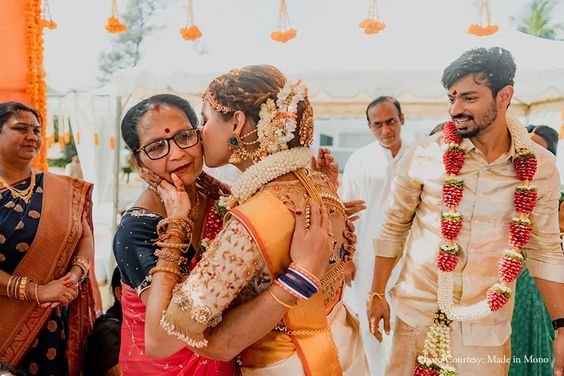
The “Thaali” ceremony, also known as the “Mangalsutra ceremony” or “Tying the Knot,” is a significant ritual in Tamil weddings. It is the moment when the groom ties the thaali around the bride’s neck, symbolizing their marital bond and union.
The Thaali is a sacred thread or necklace with a pendant that is traditionally made of gold. It is a symbol of a married woman and represents her marital status and the commitment between the couple. The Thaali is typically given to the groom by the bride’s family during the wedding ceremony.
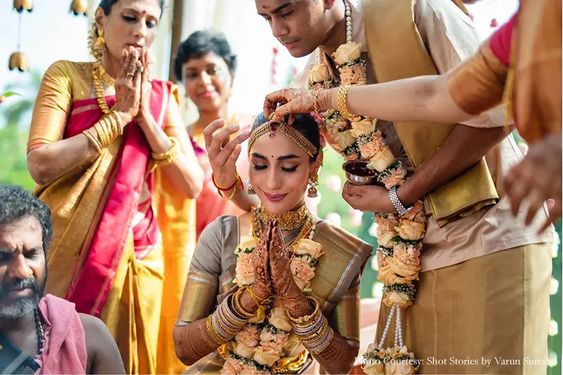
The Kumkumam ceremony symbolises the start of married life. In this ceremony, the groom takes a small amount of kumkum on his right thumb and applies it in the center of the bride’s forehead, usually in a red dot or bindi-like shape. This act indicates the groom marking the bride as his partner and the commencement of their married life.
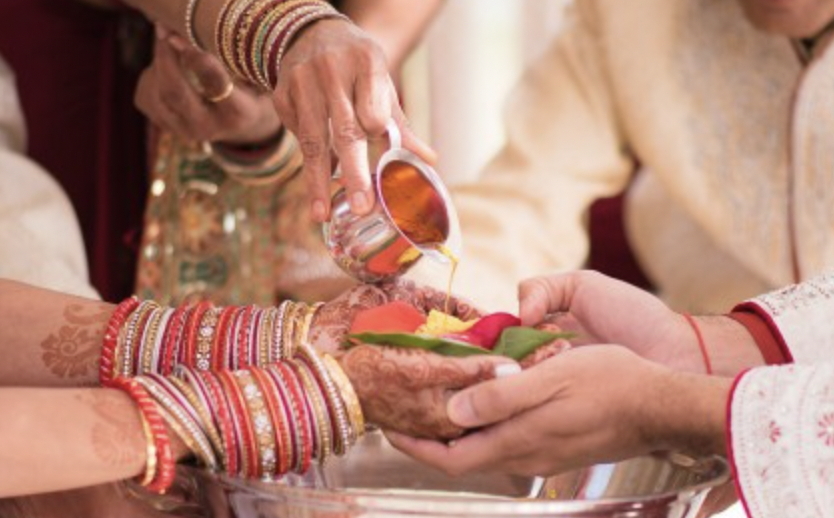
“Nalangu” is a fun and light-hearted traditional ceremony that takes place during Tamil weddings. It is a playful and entertaining event where the bride and groom, along with their friends and family, participate in various games and activities.
The Nalangu ceremony typically occurs after the main wedding rituals, such as the Thaali ceremony. It serves as a joyful celebration to bring laughter, bonding, and merriment to the wedding festivities.
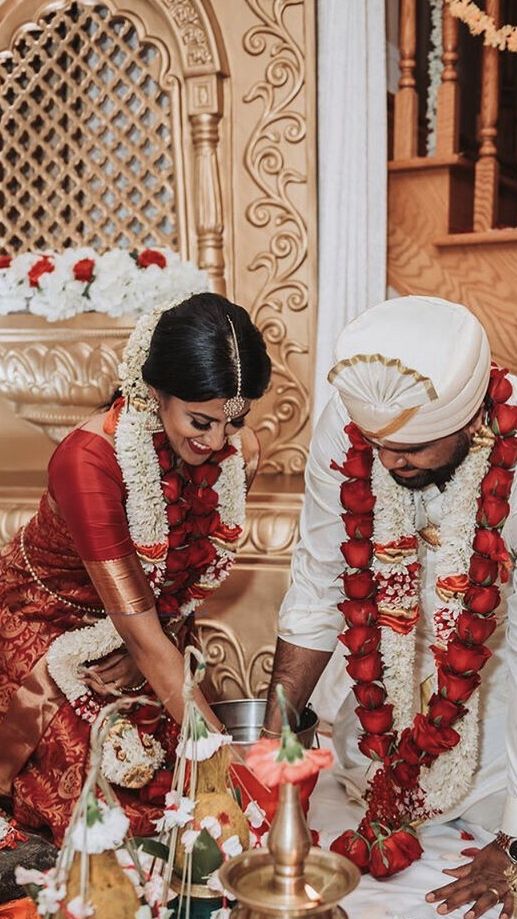

Whilst spring & summer weddings are extremely popular, especially in the UK, there is something so cosy, romantic, and stunning about a winter wedding celebration.
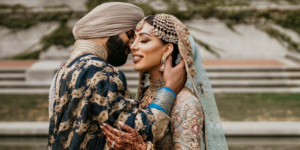
As you begin your exciting wedding planning journey, one of the first things you will do is pick the best wedding month, followed by a
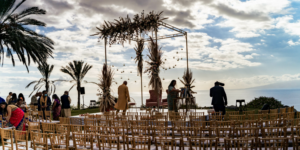
Destination weddings are a wonderful way to celebrate your big day in a unique and memorable way. Whether it be the place you first met,

We sat down to have a chat with Vaishali Shah, the brains behind the luxury wedding stationery brand: Ananya Cards. With over 21 years of

When it comes to your wedding shoes, everyone is always on the hunt for the perfect pair. How many times have you seen the perfect

As Anant Ambani & Radhika Merchant are due to tie the knot later this year, they kicked off their celebrations with a 3-day pre-wedding extravaganza
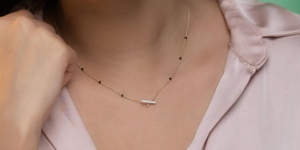
Who doesn’t love shopping for their bridal jewellery?! One of the most beautiful pieces in our culture is definitely a mangalsutra, not only is it
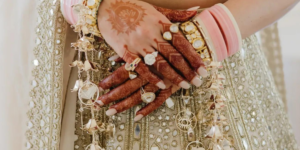
Commonly descended from North India, kaleere have a rich cultural significance and are considered auspicious in Indian weddings. They symbolise happiness, prosperity, and well wishes
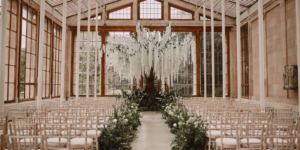
If you are your partner come from extremely large families, are two incredible social people, or simply can’t fathom the thought of crossing people off


Sign In with
Or sign up here